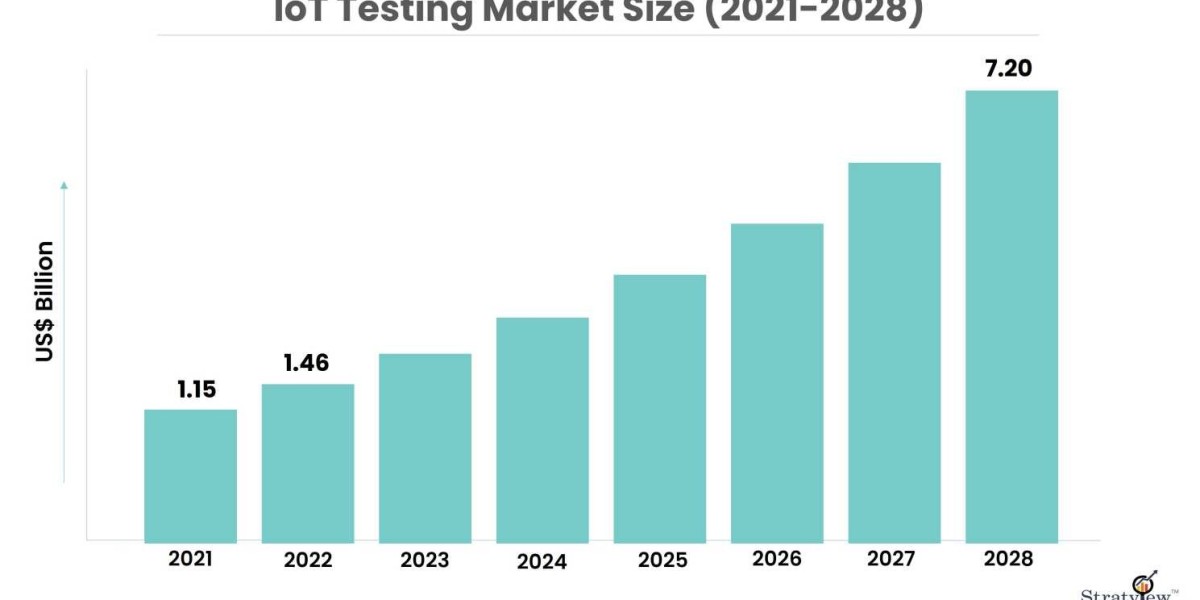In today's fast-paced and interconnected world, the Internet of Things (IoT) has become an integral part of our daily lives. From smart homes and wearable devices to industrial automation and healthcare systems, IoT technology is revolutionizing the way we live and work. However, with this rapid proliferation of IoT devices, there is a growing need for comprehensive IoT testing to ensure the security, reliability, and functionality of these interconnected systems. The global IoT testing market is expected to grow from USD 1.15 billion in 2021 to USD 7.20 billion by 2028 at a CAGR of 30.4% during the forecast period.
IoT testing is the process of evaluating and validating the performance, security, and interoperability of IoT devices and the underlying networks that support them. It involves testing various aspects of an IoT system, including hardware, firmware, software, communication protocols, and user interfaces. The goal of IoT testing is to identify and address potential vulnerabilities, performance bottlenecks, and compatibility issues before they can impact the user experience or compromise the security of the system.
One of the primary reasons for the growing importance of IoT testing is the sheer scale and complexity of IoT deployments. With billions of interconnected devices, each with its own set of sensors, actuators, and communication protocols, ensuring seamless integration and reliable operation of these devices becomes a significant challenge. IoT testing helps detect and resolve issues such as data transmission errors, network congestion, and device interoperability problems, thereby improving the overall performance and reliability of the IoT ecosystem.
Security is another critical aspect of IoT testing. As IoT devices collect and transmit vast amounts of sensitive data, including personal information and critical infrastructure data, they become attractive targets for cybercriminals. A single vulnerability in an IoT device or network can potentially compromise the security of an entire system. IoT testing plays a crucial role in identifying security vulnerabilities, such as weak authentication mechanisms, insecure communication channels, and inadequate data encryption, allowing developers to implement robust security measures and protect against potential cyber threats.
Interoperability is yet another challenge that IoT testing addresses. With a wide range of devices from different manufacturers and utilizing different communication protocols, ensuring seamless communication and interoperability between IoT devices is essential. IoT testing helps identify compatibility issues, protocol conflicts, and interoperability gaps, enabling developers to make the necessary adjustments and ensure that devices from different vendors can work together seamlessly.
Moreover, IoT testing also contributes to the overall user experience. End-users expect IoT devices to work seamlessly and intuitively, without any glitches or performance issues. By conducting comprehensive testing, developers can identify and address issues such as slow response times, inconsistent data accuracy, and poor usability, thereby enhancing the user experience and driving user adoption of IoT technology.
In addition to functional testing, IoT testing also involves performance testing, security testing, compatibility testing, and scalability testing. Performance testing helps evaluate the responsiveness and reliability of IoT devices under different loads and stress conditions. Security testing involves assessing the security controls and mechanisms implemented in IoT devices and networks to detect vulnerabilities and prevent potential breaches. Compatibility testing ensures that IoT devices can communicate and work with each other effectively, regardless of the manufacturer or communication protocol used. Scalability testing assesses how well an IoT system can handle increasing numbers of connected devices without compromising its performance or security.
As the IoT ecosystem continues to expand and evolve, the need for robust and comprehensive IoT testing becomes increasingly vital. By addressing security concerns, ensuring interoperability, enhancing performance, and optimizing the user experience, IoT testing plays a crucial role in building a reliable and secure connected world. With proper testing practices in place, we can unlock the full potential of IoT technology and harness its benefits while mitigating the associated risks.








